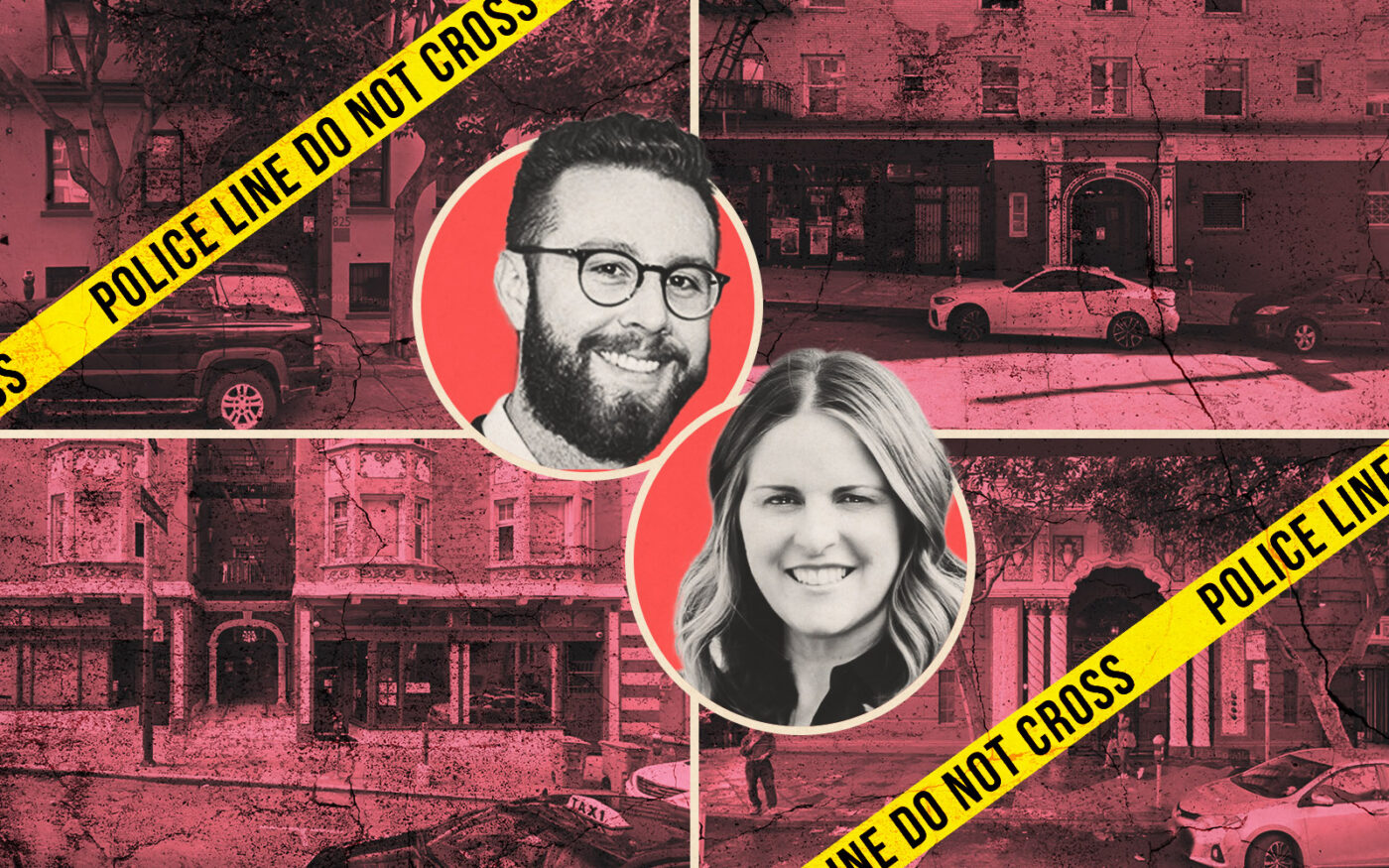 Analysis connects crime and CRE distress in San Francisco
Analysis connects crime and CRE distress in San Francisco
Trending
Crime could contribute to defaults by SF multifamily landlords
One-third of the city’s apartment properties appear on Trepp’s troubled loan watchlist

High crime rates in some San Francisco neighborhoods are yet another issue facing the city’s embattled multifamily owners—on top of plateauing rents, increases in construction and labor costs, and difficult financing. And illegal activity may put loans on some of the city’s apartment buildings at a higher risk of default, according to a recent report from Trepp.
“Crime can impact multifamily both directly, by discouraging new and existing tenants from living near a high crime area, and indirectly, where crime can result in lower business activity and therefore lower employment demand that ultimately translates into lower multifamily demand,” the report’s co-author Stephen Buschbom said via email.
San Francisco apartments already have the highest delinquency rate in the state at 7.6 percent, according to the report, and one-third of the city’s multifamily properties are on the commercial real estate data and analytics company’s troubled loan watchlist.
In addition to the Veritas loans already in default, the report also called out the higher risk factors for a $67 million loan on the five-building Mosser-Swig portfolio, held by Mosser Living and The Swig Company, both in San Francisco. The debt service credit ratio is below 1.2 and four out of five properties are located in Lower Nob Hill and the Tenderloin, which the report called “the epicenter of crime-affected business areas.”
“The Mosser Swig loan stands out as a loan to watch because it is in [or] close to a high-crime area, was originated around the same time valuations and cash flow growth peaked for multifamily properties, and the financial performance has underperformed what was underwritten rather significantly,” Buschbom said. “The portfolio will need to see a significant rebound in demand and cash flow growth before it reaches its soft maturity date at the beginning of 2025 if the borrower intends to exercise their first extension option.”
Veritas and Mosser did not reply to a request for comment.
Landlords at a loss
The San Francisco Apartment Association, a rental owner advocacy group, said it has seen an increase in calls from members concerned about crimes in the neighborhoods around their buildings.
Building owners have also taken additional steps to secure their properties, according to SFAA’s Charley Goss, including adding gates and security cameras and investing in more locks and lighting. But, he added, “there isn’t much they can do about the crime itself outside of their buildings.”
“If there is the perception that crime is tolerated in a particular neighborhood, it makes renting the apartment there more difficult,” he said via email. “You can imagine what it’s like trying to show an apartment if there is open-air drug dealing in front of the building.”
The city can help apartment owners by “fully staffing their police department, and by arresting and prosecuting people for criminal activity,” he added.
Multifamily agent Allison Chapleau of Vanguard Commercial said lack of enforcement on drug-related crimes is one of the city’s biggest issues.
“The recovery is completely within our reach,” she said. “All they have to do is prosecute the laws that are in place. Game over.”
Drug dealing and use are huge problems for owners in certain neighborhoods and also lead to violent crime, which makes those areas even more unsafe, Chapleau explained. The Tenderloin, South of Market and the Mission had the highest density of violent crime in the city, according to the Trepp report, and are all areas where Chapleau said public drug use has made life untenable for owners, tenants and workers.
Getting drug users off the street doesn’t cure them of their addictions or combat the underlying societal issues that caused them to turn to drugs in the first place, but it opens up the possibility for a blighted neighborhood to flourish, she said.
“If you get somebody who is addicted to drugs, they’re going to do anything to get the drug,” she said. “But if you make it so they can’t do it on the street, then all of the sudden it lets all of the other shareholders in this world — the people who own the buildings, the people who live in the buildings, the people who go to work in the buildings — it gives them a vote. Right now the only people being prioritized are the people doing drugs.”
Chapleau said she has worked with female owners in the Tenderloin who decided to sell their properties because they no longer felt comfortable going to the buildings alone. And she has turned down a “very large listing” in the neighborhood because she didn’t feel safe showing the property.
“It’s my life. It’s my livelihood. I don’t broker for a hobby. I broker for my business,” she said. “But when my safety is compromised, that’s first and foremost. Before food, before water. Safety is everything.”
Read more
 Analysis connects crime and CRE distress in San Francisco
Analysis connects crime and CRE distress in San Francisco
 Rents in five South Bay cities shoot past SF for the first time ever
Rents in five South Bay cities shoot past SF for the first time ever
 How First Republic closure could impact slow SF apartment market
How First Republic closure could impact slow SF apartment market




